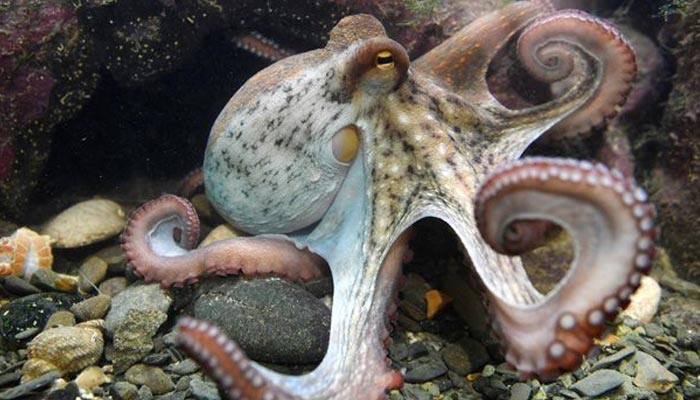Octopus and human brain have same 'jumping genes': study
Study shows two species of octupus have same molecular analogy as human brain
June 28, 2022

- Study shows two species of octopus have same molecular analogy as human brain.
- It finds that octopuses and humans share same transposons.
- Researchers use generation sequencing techniques to examine and understand molecular analogy of octopus’ nervous system.
Two species of octopuses — octopus vulgaris, the common octopus, and octopus bimaculoides, the Californian octopus — have the same molecular analogy as the human brain, a study revealed last week.
The study was conducted by Remo Sanges from Scuola Internazionale Superiore di Studi Avanzati (SISSA) of Trieste and by Graziano Fiorito from Stazione Zoologica Anton Dohrn of Naples and published in BMC Biology, SciTech Daily reported.
The study found that octopuses and humans share the same transposons, also known as “jumping genes”, which are DNA sequences that move from one genome (a set of DNA) to another while shuffling and duplicating.
The researchers used generation sequencing techniques to examine and understand the molecular analogy of the octopus’ nervous system.
“I literally jumped on the chair when, under the microscope, I saw a very strong signal of activity of this element in the vertical lobe, the structure of the brain which in the octopus is the seat of learning and cognitive abilities, just like the hippocampus in humans,” said Giovanna Ponte from Stazione Zoologica Anton Dohrn.
The octopus genome has “jumping genes”, most of which are inactive, like humans. Further, the researchers found a Long Interspersed Nuclear Elements (LINE) element, possibly active and also found in the human genome, in the part of the octopus brain associated with the animal’s cognitive abilities.
“This similarity between man and octopus that shows the activity of a LINE element in the seat of cognitive abilities could be explained as a fascinating example of convergent evolution,” said Giuseppe Petrosino from Stazione Zoologica Anton Dohrn and Stefano Gustincich from Istituto Italiano di Tecnologia.











